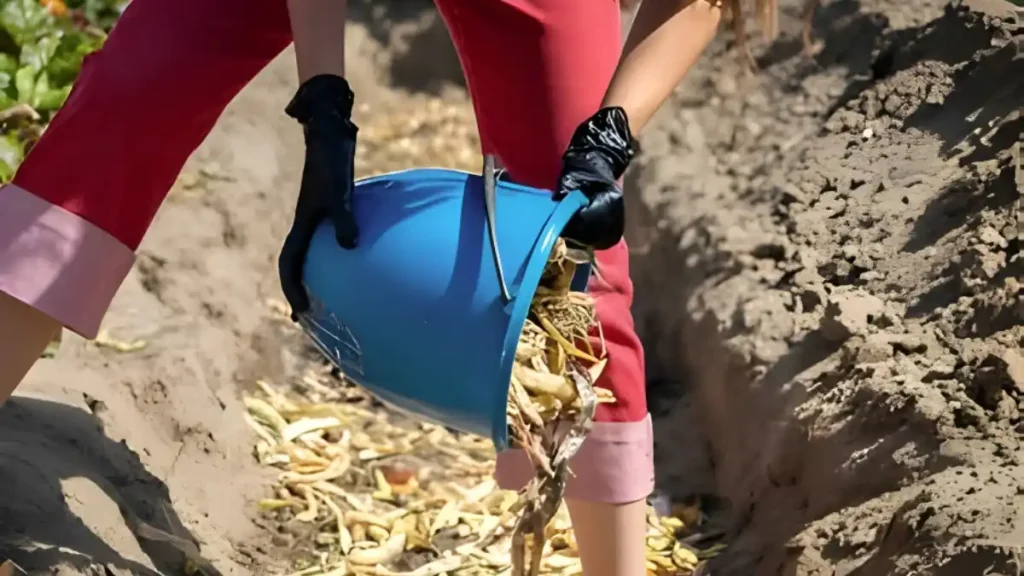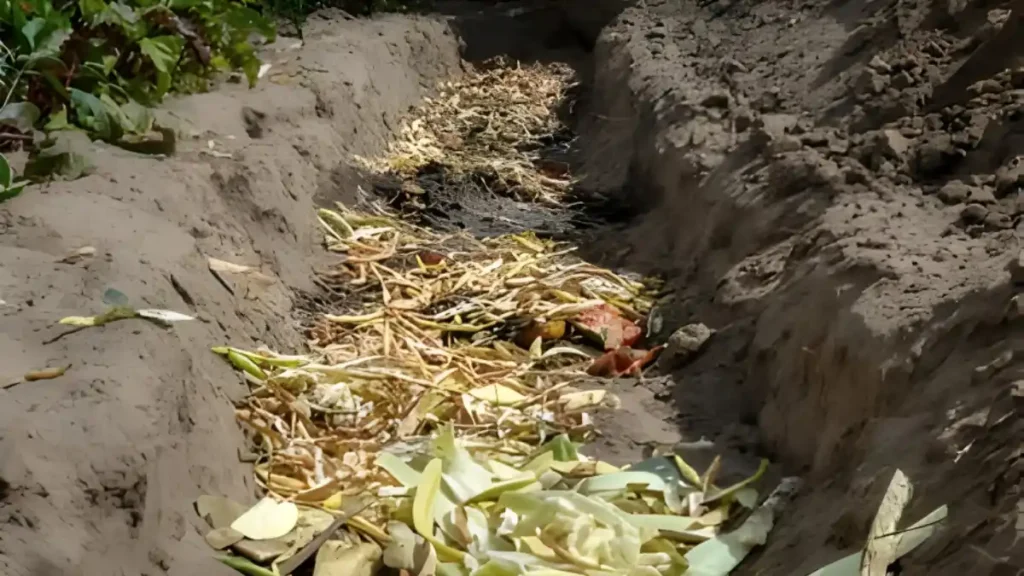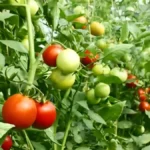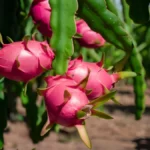Trench composting is a proven method for improving garden soil health and vitality. Integrating organic matter directly into the soil, reducing waste, and making composting easier for gardeners of all skill levels. We will examine the fundamentals of trench composting and its advantages and useful applications in this extensive tutorial.
Trench composting method:
- Select a Location: For trench composting, choose a location in your yard or garden that works well. It should be in a location where you can readily add organic waste and where there is enough sunshine.
- Excavate a trench: Cut a trench that is between one and two feet deep using a shovel or spade. Depending on the amount of organic waste you have and the space you have available, the trench’s breadth and length may change.
- Layering: Begin filling the trench with layers of organic materials. To produce a balanced compost mix, alternate layers of green (nitrogen-rich) and brown (carbon-rich) materials. Kitchen leftovers, grass clippings, and plant trimmings are examples of green materials; dried leaves, straw, and newspaper are examples of brown materials.
- Wrapping: Once you’ve filled the trench with organic trash, add a layer of dirt. This keeps pests away and aids in controlling the composting process.
- Maintenance: As organic waste breaks down in the trench, add more of it regularly. The process of stacking green and brown materials remains unchanged. Watering the trench on occasion will also assist in keeping it moist, which is important for the composting process.
- Await Decomposition: The organic materials in the trench will eventually break down and transform into compost that is rich in nutrients. Depending on variables including moisture content, temperature, and the kind of materials utilized, this process may take several months to a year.

Benefits of trench composting:
- Applying organic matter directly to the soil by trench composting improves its quality. The fertility and structure of the soil are enhanced as a result of the organic material’s decomposition, which releases nutrients.
- Trench composting minimizes nutrient loss and maximizes plant uptake by allowing nutrients to be directly taken by plant roots, in contrast to standard composting procedures where nutrients may seep away.
- This composting is an efficient approach to recycling organic waste, such as kitchen leftovers and garden detritus, minimizing garbage sent to landfills.
- This composting can help reduce weed development by covering the rotting organic material with dirt. This stops weed seeds from germinating by reducing their exposure to light.
- The addition of organic matter via trench composting enhances the soil’s ability to hold water. This can lessen the need for frequent irrigation, which can be especially helpful in drought-prone areas.
Conclusion:
Finally, trench composting provides an easy and efficient way to increase the fertility of plant soil. Organic waste can be directly buried in the garden bed to release nutrients over time, enriching the soil and encouraging healthy plant development. This method contributes to a more productive and sustainable garden environment by decreasing waste while also improving soil structure and microbial activity.
Certainly! If you’d like to learn more, please consider following our WhatsApp Channel: Harvest Gardening
A frequently asked questions:
Q1: Can I trench compost in winter?
A1: Yes, you can compost in a trench over the winter. Even though the breakdown process happens more slowly in colder climates, it still happens.
Q2: Will trench composting attract pests in winter?
A2: In winter, properly maintained trench composting shouldn’t draw pests. Meat, dairy, and fatty meals should not be composted since they attract rodents and other pests.
Q3: Will trench composting cause unpleasant odors?
A3: There’s a chance that this composting site will smell, especially in the early phases of decomposition. This can be problematic, especially in crowded or metropolitan location



